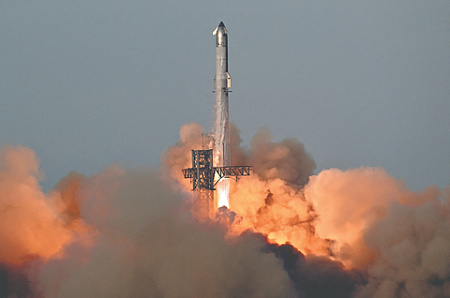
In a landmark moment for the new space age, Elon Musk’s private aerospace firm, SpaceX, has successfully completed a crucial test flight of its colossal Starship vehicle. Following a series of previous setbacks, the super heavy rocket soared from its Texas launchpad, embarking on an orbital journey that lasted approximately one hour and reached a peak altitude of 200 kilometers. This flight represents a pivotal step in developing the world’s first fully reusable transportation system designed for interplanetary travel.
While the mission was not flawless, encountering technical issues such as partial engine failures and heat damage to protective flaps during its fiery atmospheric re-entry, the vehicle successfully navigated its flight path and achieved a controlled return. For SpaceX, these anomalies are considered valuable data points in an aggressive, iterative testing program. The overall success of the flight is viewed as a monumental achievement, validating the core design and paving the way for more ambitious missions.
The implications of this successful test extend far beyond the company itself, playing a central role in the future of American and international space policy. NASA is heavily invested in Starship’s success, having selected the vehicle for its Artemis program, which aims to land astronauts on the Moon for the first time in over half a century. With this successful flight, the prospect of a crewed lunar landing, potentially as early as 2027, moves from a distant ambition to a tangible goal.
This achievement signals a potential return to the lunar surface, a feat not accomplished since the United States’ Apollo program concluded in 1972, which saw 12 American astronauts walk on the Moon. The success of a private entity like SpaceX in developing such a powerful launch system underscores a major shift in the dynamics of space exploration, where commercial innovation is now leading humanity’s charge back to the final frontier and, eventually, beyond.
